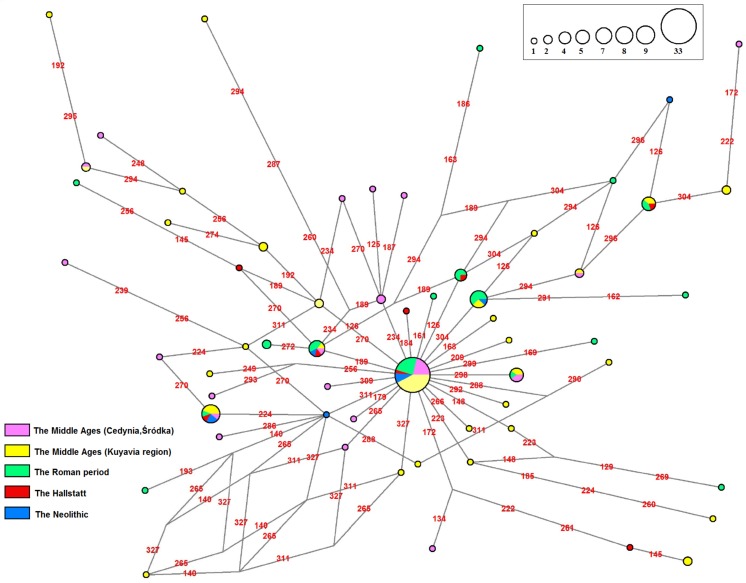Fig 4. Median joining phylogenetic network of 131 ancient inhabitants of Polish lands based on HVR-I sequences (nt 16115–16340, motifs in red).
80 samples are from archaeological sites located on a relatively small area belonging to Kuyavia and the Chełmno land and represent people living between 6.5–6.1 Ka BP and 0.8–0.6 Ka BP, i.e. 9 individuals dated to Polish Neolithic (3—Lengyel culture, 6—Globular Amphora culture), 8 from Polish Late Bronze Age/Early Iron Age (Hallstatt culture), 34 from Polish Roman Period (Wielbark culture; Linowo—13, Rogowo—21) and 29 from Polish Middle Ages (Gruczno—15, SBK-4–14). Additional 51 medieval samples collected outside Kuyavia and the Chełmno land (Cedynia—35, Sródka—16) constituted the reference group. Origin of the sample is marked with different colors. The size of the node is proportional to the number of individuals.

